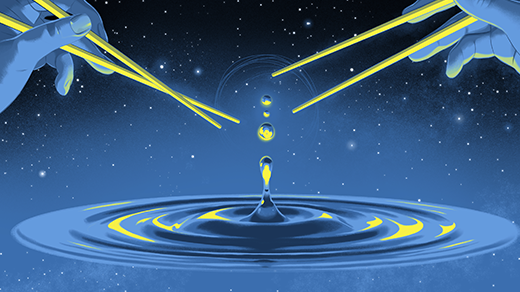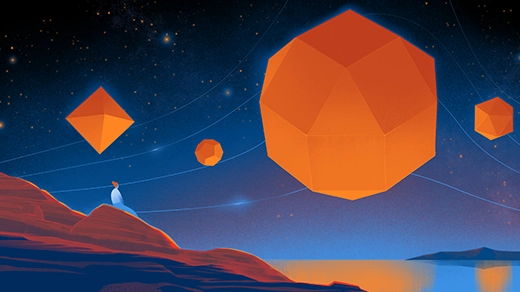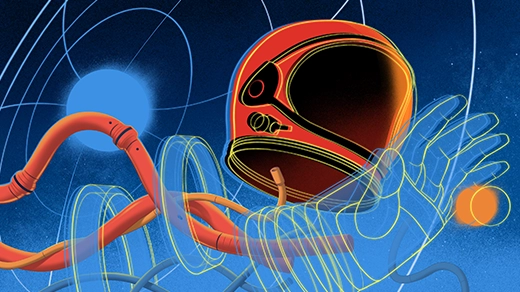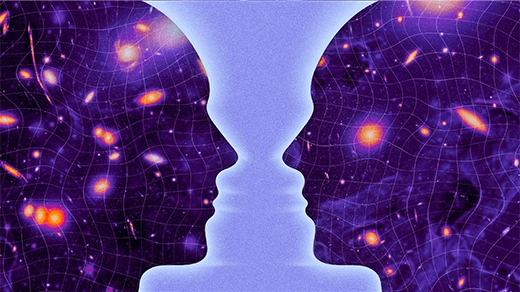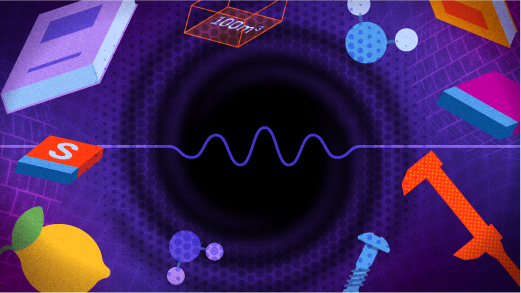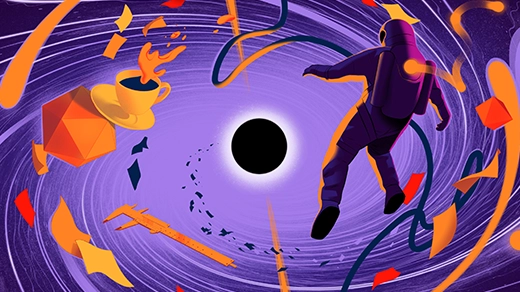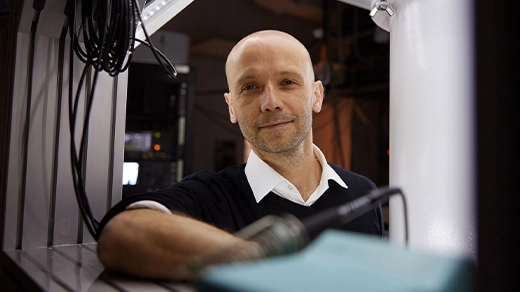Latest Articles
It Might Be Possible to Detect Gravitons After All
A new experimental proposal suggests detecting a particle of gravity is far easier than anyone imagined. Now physicists are debating what it would really prove.
Can Space-Time Be Saved?
Curious connections between physics and math suggest to Latham Boyle that space-time may survive the jump to the next theory of reality.
Physicists Reveal a Quantum Geometry That Exists Outside of Space and Time
A decade after the discovery of the “amplituhedron,” physicists have excavated more of the timeless geometry underlying the standard picture of how particles move.
If the Universe Is a Hologram, This Long-Forgotten Math Could Decode It
A 1930s-era breakthrough is helping physicists understand how quantum threads could weave together into a holographic space-time fabric.
The Two Faces of Space-Time
A mysterious phenomenon known as duality often leads to new discoveries in physics. This time, space-time itself can sometimes be two things at once.
The Thought Experiments That Fray the Fabric of Space-Time
These three imagined scenarios lead many physicists to doubt that space-time is fundamental.
The Unraveling of Space-Time
This special issue of Quanta Magazine explores the ultimate scientific quest: the search for the fundamental nature of reality.
He Seeks Mystery Magnetic Fields With His Quantum Compass
Alex Sushkov is updating an old technology with new quantum tricks in hopes of sensing the magnetic influence of dark matter.
AI Starts to Sift Through String Theory’s Near-Endless Possibilities
Using machine learning, string theorists are finally showing how microscopic configurations of extra dimensions translate into sets of elementary particles — though not yet those of our universe.

